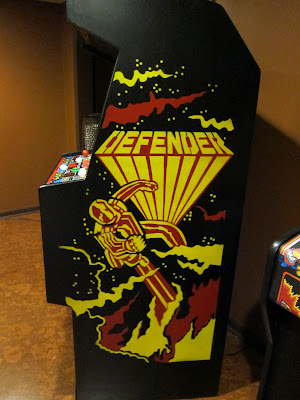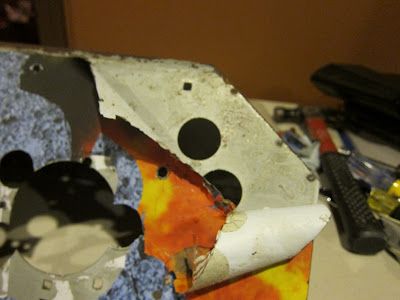What era should I look for?
This is the first question you’ll want to answer. Which decade is right for you? These are the things that should factor into your decision...
Cost
Here are some very rough guidelines about what to expect:
- $400-1200 for an “EM” pin (1978 and older, no electronics)
- $800-2000 for a game from the 80’s
- $2000-$3000 for a typical game from the 90's
- $3000-5000 for a used game less than 5 years old
- $5000-$8000 for an “A” title, like Twilight Zone or Attack From Mars
- $5000 (shipped) for a brand new "Pro" game from Stern Pinball
Do you want a game with simple goals, that you and your guests can learn in a few minutes? Or do you want a game that's "deep", so you know you won’t get bored with? A lot of games from the late 80’s have simple goals, but are still a lot of fun to play. If you’re only buying one game, look for one with ramps and multiball.
Nostalgia and Artwork
Do you want to play something you remember playing as a kid? If not, you’ll probably want to stick to the newer games. On the other hand, you may want something that looks beautiful when you’re not playing it. The older games had great original artwork, while most newer games use a license (like “Transformers” or “Iron Man"). Browse IPDB, you may be surprised at what was made into a game.
Maintainability
Games from 1990 and later have more parts, but they tend to break down less often, and replacement parts are easier to find. “EM” pins are easy to work on once you learn how, but it can be hard to learn, and they have more mechanical parts. I love games from the 1980’s, but they have an Achilles’ Heel: connectors. Many connectors from that era were poorly designed, and the game may be unreliable until the connectors are rebuilt. This isn’t hard to do, but it’s tedious.
Investment Value
In the 90’s, Baby Boomers were buying games from the 70’s and 80’s like crazy. But as these older guys have started retiring and moving into smaller homes, these games have dropped in value. Right now, games from the 90’s are doing well, because that generation is buying. And so it goes -- as the buyers “age out” of the collector market, their games will drop in value. Don't worry too much about value. Take care of your pin and enjoy it! I've sold about 50 games over my 18 years of collecting, and I've only lost about $2000 total.
Summary
For a first-time buyer with kids, I’d recommend a game with a “DMD” (dot matrix display) from 1990 or later. Look for one with a rating of at least 7/10 on IPDB or Pinside; this gives you the best chance of recovering your investment if you want to sell it later. But if you find a game that you love and everyone else seems to hate, don’t be afraid to buy it. Just know that it may take a little longer to sell it.
Great, where can I buy one?
In my order of preference:
- Pinball Bash - group of collectors mostly from the Southeast.
- Pinside - the new RGP.
- Mr Pinball - by collectors, for collectors.
- KLOV forums - arcade group with some pins for sale.
- Craigslist - look out for scams, and don’t bother with broken games.
- eBay - avoid retail sellers and anyone with less than 98% feedback.
Before you begin shopping around for a pin, get the Mr. Pinball price guide. As the guide says, prices will vary by condition. It’s worth paying $200-400 more for a game that’s in nice shape, works 100% and has already been restored.
Highly collectible games may drop in value as the pinball collector community moves on to the next “it” game. There are a lot of great “B” titles for less money, that hold up well over the long haul. Some bad movies were made into really fun games - “Congo”, “The Shadow” and “Stargate” are a few examples.
Don’t be afraid to negotiate. If you find a game that’s been listed for a few months, ask them to knock the price down a bit. If someone is asking $1000 more than the game is worth, don’t bother with them - they’re retail sellers waiting for a sucker.
It broke, now what?
If you like to tinker, head on over to http://www.pinwiki.com. If you prefer to leave it to the pros, ask for a repair person on your local forum.
More Links
- www.ipdb.org – detailed info on every pinball machine ever made
- www.mrpinball.com - like CraigsList, but just for pinball machines.
- www.pinside.com - very active forum. Great for technical advice, and buying games.
- http://forums.arcade-museum.com/ - mostly a videogame forum, but there’s plenty of pinball here too. Check out the For Sale section.
- http://www.bayareaamusements.com/ - buy parts here
- http://www.marcospecialties.com/ - another parts place, a little more expensive but they have more stuff
- http://www.pinballsales.com/asp/default.asp - Good place to buy a brand new game









































